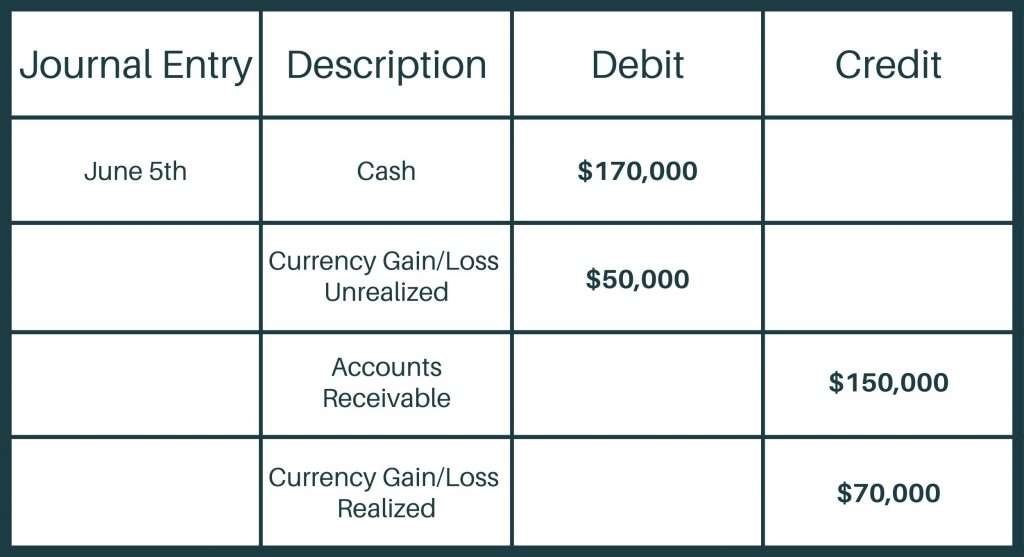Companies that frequently handle transactions in currencies other than their functional currency often have gains/losses caused by foreign exchange rates. As a result, these companies must complete a foreign currency revaluation.
If exchange rates change dramatically or the company frequently deals with a high volume of foreign currency transactions, this can impact the company’s financial reporting burden.
So in this post, we’ll discuss what foreign currency revaluation is, and when they occur. We will also walk through journal entry examples, discuss key challenges, and provide automation solutions.
What Is Foreign Currency Revaluation?
Foreign currency revaluation is the period-end process of re-valuing a financial account or transaction from a foreign currency into a company’s reporting currency using a foreign exchange rate.
To illustrate the concept as simply as possible, pretend you’re an American citizen visiting Canada. It’s January 15th, and you went to the store with your friend to buy something but forgot your wallet. Your friend agrees to purchase a product for you, costing 10 Canadian dollars (CAD). Let’s assume that on that day, 1 CAD is equal to .75 USD. At this exchange rate, you’re planning to pay back your friend 7.50 USD for the product.
However, let’s pretend that you don’t actually pay back your friend for the product until January 30th. If the exchange rate on January 30th changed and 1 CAD now equals 1.5 USD, you’re now paying the equivalent of 15 USD for the product rather than 7.50USD. So you technically lose 7.50 USD. This is the concept of a foreign currency revaluation, and a realized loss.
As you can see, even though the agreed-upon transaction amount remains the same (it’s still 10 CAD), the value of that transaction changed based on foreign currency exchange rate fluctuations. The same applies to companies that follow accounting standards.
So, foreign currency revaluation processes are applicable to open transactions where the exchange rate fluctuates from the date the transaction agreement was entered into and the date the transaction is settled.
What Does This Mean?
This means that foreign currency revaluations always occur whenever:
- The company has an accounts receivable entry and is expecting payment in a currency other than its functional currency.
- The company has an accounts payable entry and is planning to make the payment in a currency other than its functional currency.
Foreign currency revaluations can also occur across entities within a parent company and impact intercompany payables and receivables. We discuss this scenario at length in our guide to foreign currency translation.
What Is The Purpose of Foreign Currency Revaluation?
The purpose of foreign currency revaluation is to help companies remain compliant with accounting standards and keep an accurate record of how much they owe/are owed while factoring in foreign currency exchange rates. In some situations, foreign currency revaluation is also necessary to comply with tax laws.
So whenever a company has a financial transaction that involves a foreign currency, a revaluation is mandatory at period end. This is to ensure accurate records of the realized or unrealized gain or loss, and to comply with the company’s financial reporting requirements, to shareholders, and tax authorities.
If the company doesn’t perform the revaluation when the books close, it is at risk of reporting inaccurate financial data.
Foreign Currency Revaluation Example
To illustrate the concept of foreign currency revaluation, here’s a simple example.
Let’s say that Company A purchases office supplies from Company B on May 15th. Company A’s functional currency is euros and agrees to pay 100,000 EUR for the equipment in 30 days. However, Company B’s functional currency is US dollars and therefore records the accounts receivable transaction in USD.
For the sake of simplicity, let’s assume that on the date of the transaction agreement, 1 EUR is equivalent to 1 USD (so the exchange rate from EUR to USD is 1).
In this case, here’s the journal entry that Company B would record on May 15th:

Remember that because Company B’s functional currency is US dollars, they still record the transaction in USD even though they will be paid in EUR.
However, let’s assume that when Company B closes the books at the period end, the exchange rate changes. For the sake of this example, we’ll say that when Company B closes the books on May 30th, 1 EUR is now worth 1.5 USD.
So even though the agreed-upon amount never changed, the value of the amount owed did change. In this case, the 100,000 EUR due (which, on May 15th, was worth 100,000 USD) is now (May 30th) worth 150,000 USD.
This is where the revaluation occurs. The original 100,000 USD recorded on May 15th is now worth (revalued at) 150,000 USD on May 31st due to the exchange rate fluctuation.
To account for the gain or loss created by the exchange rate fluctuation, we need to create another journal entry at the period end:

Now let’s pretend that Company A finally pays Company B on June 5th. We can call this the settlement date. If the exchange rate on the settlement date for 1 EUR is now 1.7 USD, the unrealized gain is reversed, and if the unrealized gain is reversed, the differences in value are recorded as a realized gain. This is what the settlement date journal entry would look like:

Key Challenges With Foreign Currency Revaluation
The example above is relatively straightforward. However, companies that handle thousands, or even millions of foreign currency transactions monthly often face a variety of challenges with foreign currency revaluation.
Many small business accounting software solutions claim to automate this process. That being said, most users typically end up manually cleaning up accounting entries related to foreign currencies.
This is because the recommended exchange rate provided by the software might not align with your bank’s exchange rate. Additionally, intercompany transfers may not be supported between foreign currency accounts.
Fortunately, you can solve these challenges with automation.
The Foreign Currency Revaluation Process (Automated)
We were frustrated by the common pain points mentioned above regarding foreign currency revaluation. As a result, we built SoftLedger to automate the process.
So here’s how SoftLedger automates the foreign currency revaluation process.
Identify All ledger Accounts to Be Revalued
In general, this is any balance sheet account you expect to have a posted currency different from the reporting currency of your locations.
For any ledger accounts that need to be revalued at the month end, check the Revalue Forex Rates box when creating or editing Ledger Accounts under Financial>Accounts:

Set the Forex Gain/Loss Account
The next step is to navigate to each location and set the Forex Gain/Loss Account.
This is the account that SoftLedger uses to calculate the gain or loss from foreign currency fluctuations. It will be on the other side of the ledger accounts chosen to be revalued in the previous step:

Revalue Forex Rates
Next, go to “Accounting Periods” and select the lock button icon under Forex for the period you want to close.
If there are any locations with transactions in currencies other than that location’s reporting currency, you can set a new rate:

After adding or accepting the rates, click on the “Approve Re-Valuations” tab and then click “Post Revaluations and Close FX”:

After clicking Save Rates and then Approve Re-Valuations, SoftLedger automatically executes the following processes:
- It records a journal entry for any gains and losses caused by the foreign exchange rates.
- It automatically adjusts the balance for any ledger accounts set to be revalued.
This way, you never have to manually calculate gains and losses caused by foreign currency transactions, which saves your team time and reduces the possibility of manual errors creeping into the company’s financial data.
Automate The Foreign Currency Revaluation Process Today!
While it’s possible to account for foreign currency devaluations manually, SoftLedger does the entire process for you automatically.
This automation saves your team’s time so that they can close books faster and improve data accuracy.
If you need an accounting software platform that automates the foreign currency revaluation process, book a demo of SoftLedger today.



